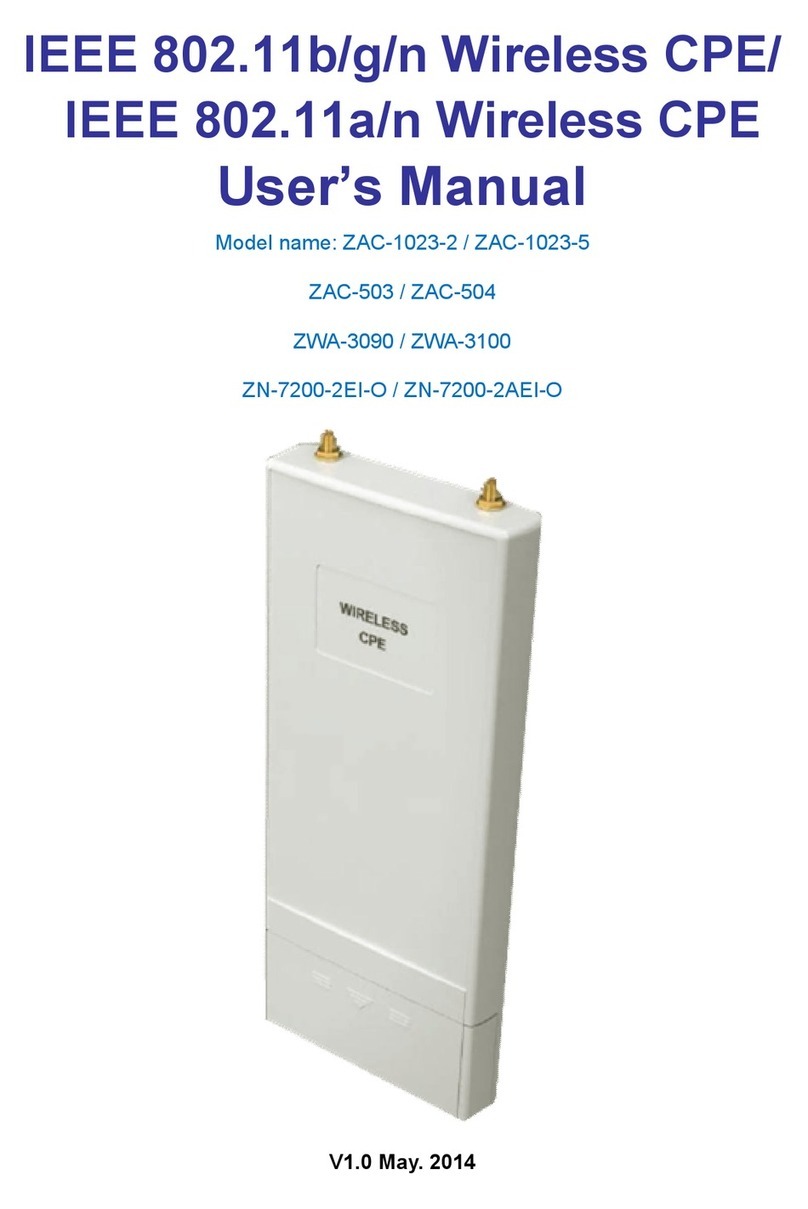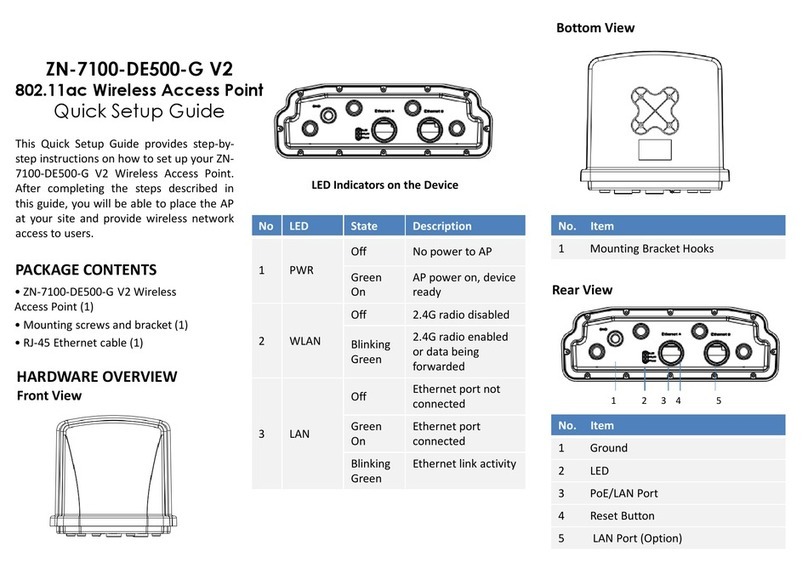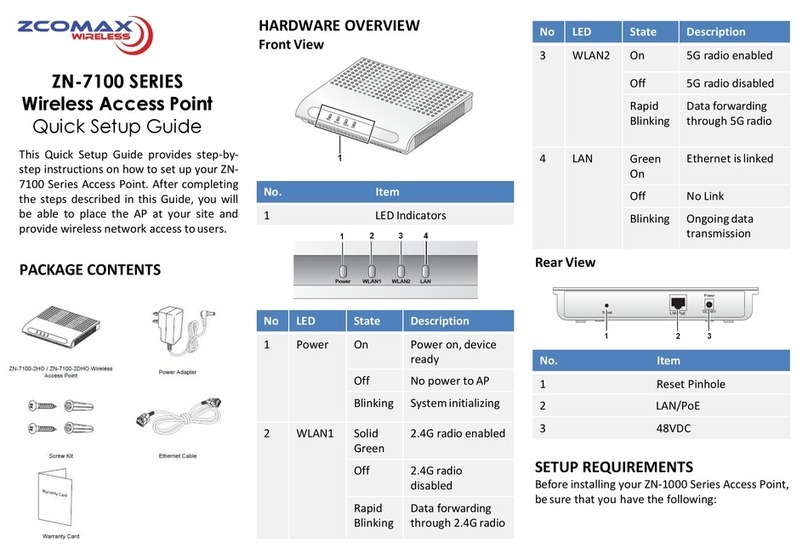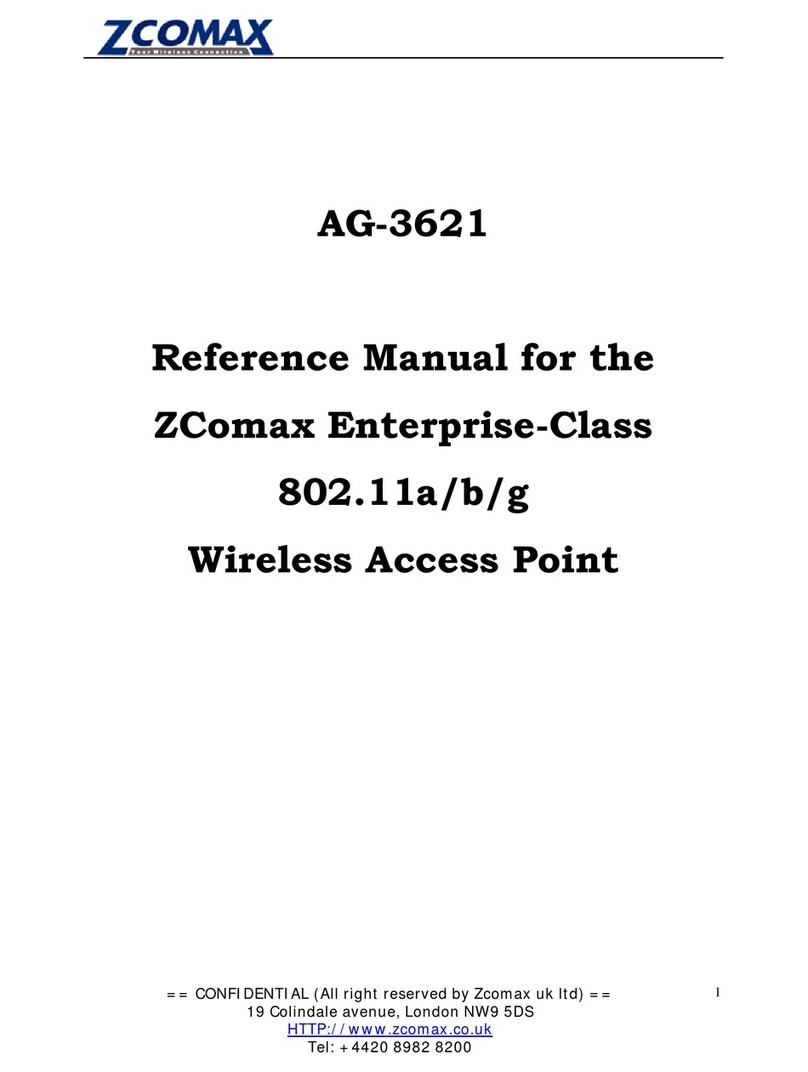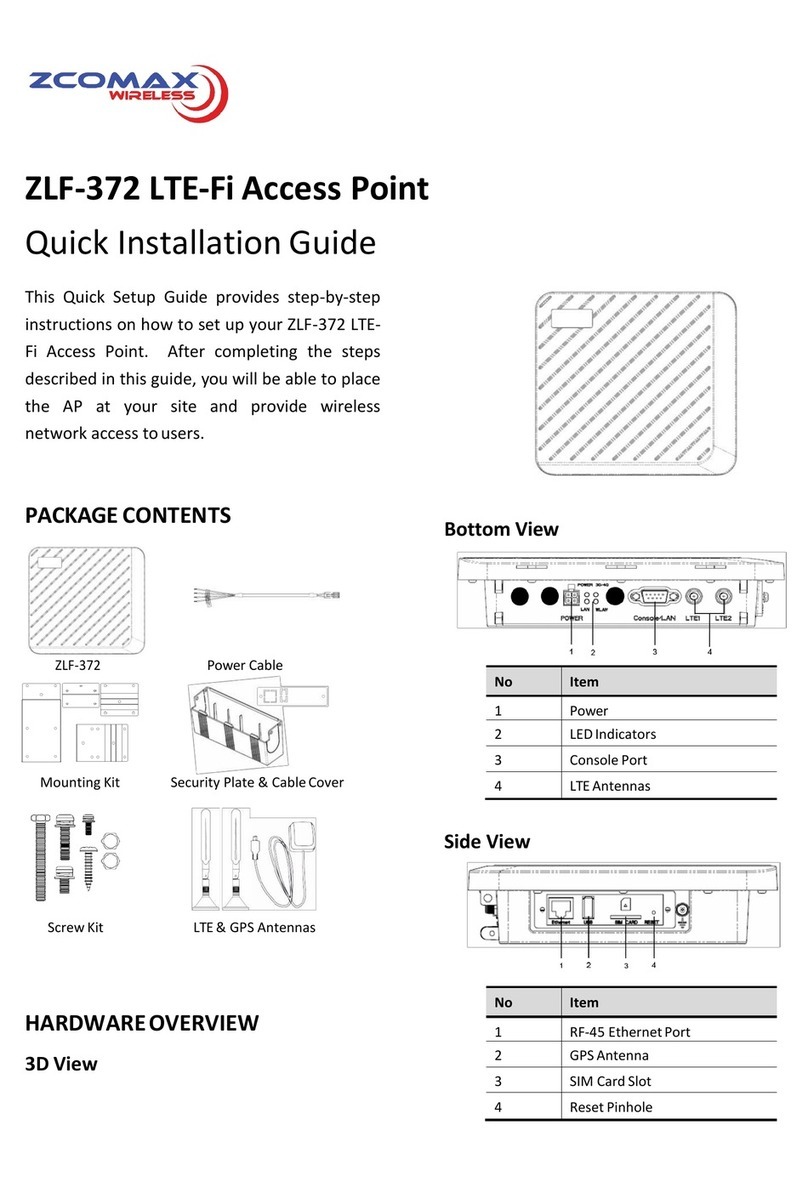
SETUP REQUIREMENTS
Before installing your ZN-1000-ZBS accesspoint,
be sure that you have the following:
•
A computer running Windows 7, Vista, orXP
•
A CAT5 UTP cable of required length
•
One of the following power sources:
-IEEE 802.3at-compliant Power over Ethernet
(PoE) source
-Power adapter came with thepackage
STEP 1: POWER ON THE AP
The Smart Access Point comes with a PoE
injector kit for connecting to power over the
Ethernet port. The Smart Access Point
automatically turns on as soon as it is connected
to a power source.
1. Insert one end of an Ethernet cable tothe
P+D/OUT port on the PoE injector.
2. Insert the other end to the LAN/PoE port
on the Smart Access Point.
3. Connect a power cord to the PoE injector.
4. Connect the power plug to a wall socket.
STEP 2: CONNECT THE AP TO YOUR PC
1. Insert one end of an Ethernet cable to the
Data/IN port on the PoE injector as figured
above.
2. Insert the other end to the assigned LAN port on
your PC as figured above.
3. From your computer, go to Start > Settings >
Network Connections or Start > Control Panel>
Network Connections.
4. When the Network Connections window
appears, right-click the icon for Local Area
Connection, and then click select Properties.
5. Select Internet Protocol (TCP/IP) from the
scrolling list, and then click Properties.
6. Select Use the following IP address option (if it
is not already selected), and then make the
following entries:
•
IP address: Any address in the 192.168.1.x
network
• Subnet mask: 255.255.255.0
7. Click OK to save your changes, and exit the
dialog box.
STEP 3: LOG INTO THE AP
1. On your PC, open a Web browser window.
2. In the browser, type https://192.168.1.1 and
press <Enter> to connect to the AP.
3. When a security alert dialog boxappears,
click OK/Yes to proceed.
4. When the login page appears, enter the
following:
•
Username: admin
•
Password: password
5. Click Login.
STEP 4: CONFIGURE THE AP
1. On the Web interface menu, click Advanced
Settings.
2. Select Wireless Mode: FAT AP.
3. Select DHCP Client to obtain an IP address
from the DHCP server automatically, or
select STATIC to enter the values manually.
Click Apply to save changes.
4. Go to RF Configure > Wireless Settings. (For
dual band 5G setting, select Card 2first
then go to RF Configure > WirelessSettings.)
5. Select your location fromCountry/Region.
Click Apply to save the changes.
6. Select a clean channel.
7. Go to RF Configure > SecurityProfile
8. Select a profile (eg. #1) , then click Edit.
9. Type the name of the network in the SSID
field.
10. Enable authentication and encryption as
needed. Click Apply to save the changes.
11. Repeat Steps 8-9 for each Profile #interface
that you want to enable.
12. Click Logout to exit the Webinterface.
Cautions:
1. Use only the power adapter and PoE injector
that came with the wireless AP.
2. Make sure that the PoE injector is properly
grounded
Note:
If the AP is deployed with an AP controller,
follow the section INSTALL THE AP to proceed.






